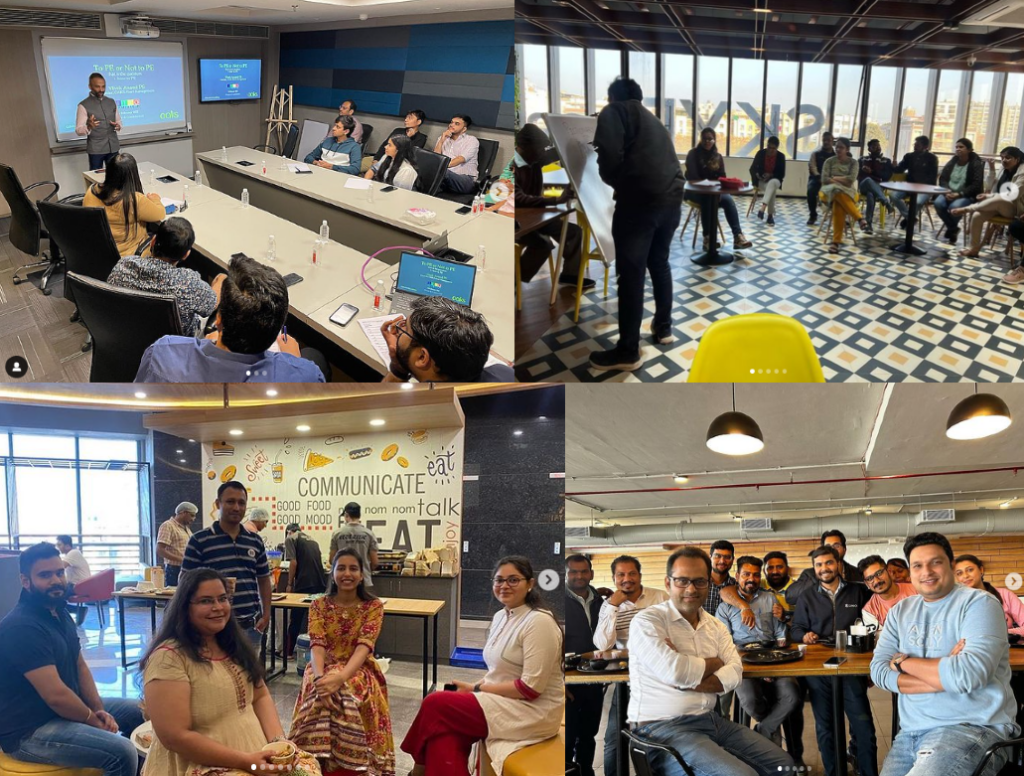The concept of office space has undergone a significant transformation over the past few years. The changing work styles and technology advancements are driving companies towards flexible workspaces.
Flexible workspaces offer a dynamic workplace solution that adapts to different working styles based on the company’s work requirements. These spaces provide companies with the best amenities, such as adaptable workstations, advanced technology, pleasant work environment, and more in addition to the amenities that traditional offices do. No wonder companies are investing in flexible workspaces to provide a conducive work environment to their employees.
In this post, we’ll see how companies are adapting to the changing needs of their workforce through office space design. We will explore what the future of office space looks like and what lies ahead for companies.

Instead of investing in traditional offices, the majority of companies will opt for smart coworking spaces for setting up their workspaces. Coworking spaces offer companies an opportunity to save on rent and utilities while providing their employees with a flexible and creative work environment. They are perfect for doing collaborative work because of the state-of-the-art technology and amenities it offers.
Coworking spaces offer dedicated areas to carry out various work assignments without any hassles. For example, an open desk layout enables better team collaboration, huddle rooms or small meeting rooms are ideal for quick brainstorming sessions and discussions, conference rooms can be leveraged for organizing client meetings, and more.
In the coming years, coworking spaces will become more personalized and offer customized office solutions to accommodate various working styles and individual company requirements.
Often popularized as the best of both worlds, hybrid working is the preferred work model of most employees in recent times. The future will see an accelerated shift towards hybrid working models thereby allowing employees to split their time between working remotely and working in the office. This will offer employees more flexibility and autonomy to work collaboratively while maintaining a perfect work-life balance.
To support and implement this hybrid work model, companies will have to redesign their offices to accommodate a flexible workforce. Employees may not require a dedicated desk, instead, companies will have to allow dynamic desk booking to employees based on their needs. Besides changing the office design, companies will be investing in building a conducive work environment that is more productive than home, where employees can socialize with each other, and develop a sense of belonging.
Companies will start putting a greater emphasis on employee well-being by offering a work environment that supports the physical and mental health of their employees. This will help them retain not only existing talent but also attract new candidates to their open roles.
Offices will invest in building comfortable and ergonomic workspaces that support good posture and risks of injuries at the workplace. For example, using ergonomic chairs, standing desks, advanced tech gadgets, such as supportive computer accessories, and more. Besides proper seating arrangements, the office will also incorporate an excellent lighting system that provides adequate illumination across all corners of your office. Offices will also prioritize adding plants, paintings, and more to create an inviting and calming work environment.
Further, companies will support the emotional well-being of their employees by crafting wellness programs and providing access to mental health resources to them. For example, stress management workshops, mindfulness activities, counseling, therapy, and more. This will help employees manage their mental health better and develop a supportive work culture within the company.
Office spaces will be prioritizing collaboration and community. Although remote work offers numerous benefits, employees might feel disconnected and isolated from their colleagues and your company. Hence, offices will have to be designed to combat these feelings of isolation and build a work environment that fosters communication, teamwork, and creativity.
This dynamic and engaging work environment will allow both formal and informal communication among employees thereby leading to enhanced collaboration and improved team relationships. This will create a sense of belonging among employees and build a productive and motivated workforce.
Similarly, community-building will also play an important role in future office spaces. Offices will start creating spaces for social interactions, such as communal areas for lunch or tea breaks, informal meeting spaces, lounge areas, and more. Besides, companies will start organizing team-building activities and networking events more often to improve employee participation and engagement, boost collaboration, and create opportunities for extensive interaction.

Sustainability will be a top priority for office spaces. To create a sustainable office space, companies will have to adopt sustainable practices in their office spaces thereby reducing their carbon footprint and contributing to building a clean and green environment.
Offices will need to be fitted with energy-efficient lighting and HVAC systems that consume less power and optimize energy use. This can be supported by building large windows that bring ample natural lighting and fresh air into the office spaces. Introducing natural elements, such as plants, living walls, and green roofs throughout the workspaces will help in improving air quality, creating a pleasant work environment, and elevating employees’ moods and productivity.
Offices will contribute to reducing their waste by implementing recycling and composting programs, promoting the use of sustainable materials, reducing the use of paper, and more. Companies can also contribute to sustainability by encouraging employees to use public transport or carpool to office locations.
Did you know 65% of employees prefer working for companies with robust sustainability policies? Hence investing in sustainability will also help companies attract and hire top talent.
Lastly, office spaces are likely to see an increase in the adoption of advanced technology and gadgets to enhance employee productivity and team collaboration. Considering the rise in the adoption of remote and hybrid work, technology plays a crucial role in facilitating better team collaboration and communication.
The future workspaces are likely to see an increased use of virtual and augmented reality thereby ensuring that employees stay connected even if they are located in different parts of the world. These technologies will also allow employees to collaborate and work together to finish their work assignments on time.
AI-powered office tools, such as chatbots and digital assistants will provide employees with instant support for any workplace-related query without any hassles. These tools can also be leveraged to analyze employee data and make important business decisions. Similarly, workspace management tools will be leveraged to manage activities, such as desk booking, meeting room booking, conference room booking, and more.
Flexible office spaces and hybrid working are here to stay. Going forward, most companies will be investing in collaborative workspaces to adapt to new office space trends and technologies and cater to the changing needs of their employees. Their focus will be on creating adaptable workspaces that promote collaboration, productivity, and employee well-being.
The Address hope that this post has educated you on the future of office space and prepared you to embrace the change to succeed in the competitive business market.
What are the best locations for Coworking Space In India

